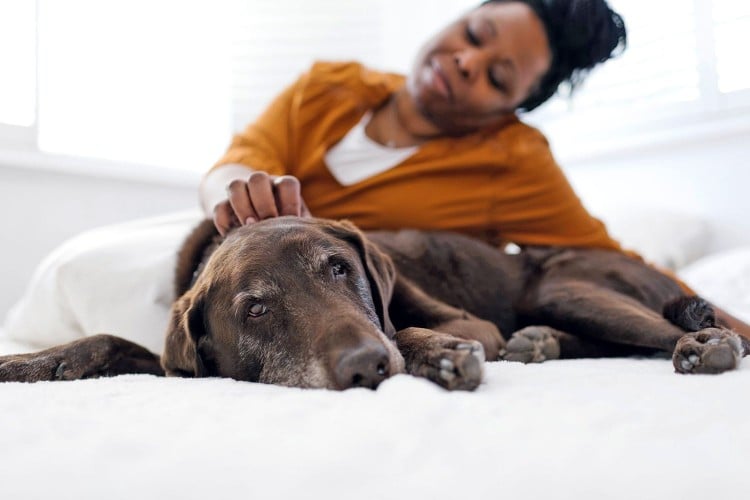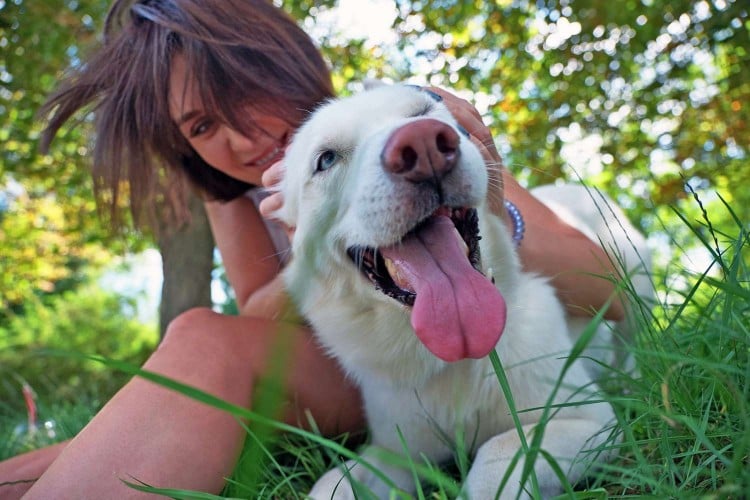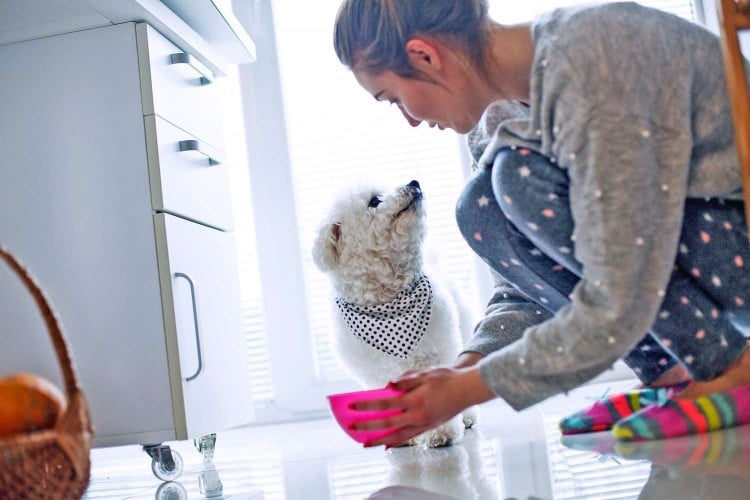
At the end of 2021, my 4-year-old dog, Millie, started limping on her back right leg and eventually stopped putting pressure on it altogether. Our vet thought she had torn her ACL and referred us to a local pet hospital for a surgical consultation.
The surgeon we eventually saw informed us that Millie had actually torn the ACL in both of her back legs and would need surgery to fix them. *Gulp* We could only imagine what the cost of dog ACL surgery would be.
What Happens If a Dog Gets a Torn ACL? Here's What to Expect If It Happens to Your Pup
How Much Does Dog ACL (CCL) Surgery Cost?
A dog's cranial cruciate ligament, or CCL, is similar to the ACL in humans. The ligament connects from the back of a dog's femur (thigh bone) and wraps around to the front of the tibia (shin bone), stabilizing the knee joint. Because it plays such an important role, a CCL rupture (a break or tear) can permanently affect a dog's ability to walk, run, or even stand up easily.
When a CCL is torn, there are a few different surgical options to repair it. The exact cost is determined by the type of surgery that's needed, where you live, your veterinarian or surgeon's office, and other factors. The cost of CCL surgery for a dog will generally range from $1,000–$5,000 per knee.
Millie had torn the CCL in both of her back legs, and her surgeon—Chad E. Spah, DVM, DACVS, at BluePearl Pet Hospital in Des Moines—recommended the tibial plateau leveling osteotomy (TPLO) procedure, the most popular type of dog ACL surgery. We were given an estimated range of $3,000–$4,000 for the TPLO surgery on one knee or $5,500–$6,500 for both knees. After Spah talked us through the potential outcomes and surgical considerations, we decided to have the surgery done on both knees at the same time.
We were required to pay $6,000 when we dropped Millie off for surgery. Depending on the care she needed throughout her stay, we knew we might be required to pay up to an additional $500—but it wouldn't exceed the top of the estimate we were given. Unfortunately, we did have to pay $500 upon picking her up after surgery, so we paid a total of $6,500 for the bilateral TPLO.
What If I Can't Afford ACL Surgery for My Dog?
Most vets will require payment at the time of surgery, so be prepared with a financial plan before scheduling a surgery date. Always talk with your vet about any financial assistance or programs they offer.
If you have pet insurance, check with your provider to see how much of the surgery it will cover and determine your out-of-pocket costs. Some insurance companies may even pay the hospital directly, making the process even easier. If you can't afford the surgery, some vets will take CareCredit, a form of financing available in human and veterinary medicine. The BluePearl Pet Hospital in Des Moines says they accept assistance through Frankie's Friends, and pet parents can also look into assistance through other charity organizations.
What's Included in the Cost of ACL Surgery for Dogs?
At the pet hospital that took care of Millie, many aspects of the surgery were included in our overall cost. We paid a separate $150 fee for the consultation prior to surgery, but everything else required for surgery and follow-up appointments was included in the $6,500 fee we paid.
Depending on your particular vet, not all aspects of the surgery and post-surgical care will be included. Make sure to ask for an itemized list of what's included in the hospital's cost for ACL surgery to avoid any surprises.
The overall cost of surgery and what's included will vary across vet offices, but for my dog's procedure, the following was included:
- X-rays before surgery
- Anesthesia
- Epidural
- IV fluids, including pain medications
- Surgery (the TPLO on both knees)
- Plates and screws
- Sutures and surgical supplies
- Overnight hospitalization and care
- Pain medications to take home
- Antibiotics to take home
- Cone to take home
- Incision check at 2 weeks post-surgery
- X-rays at 8 weeks post-surgery
My dog absolutely hated wearing the cone, so we spent an additional $15 on an inflatable doughnut collar—the best decision we made! Spah also recommends using a full-body dog mobility harness to help hold up your dog's back legs as she recovers from surgery and gets used to the new positioning of her knee. He says a towel looped around the lower belly can also be used. Personally, we went the towel route because the harnesses can be pricey, and we felt comfortable with our ability to lift her up without a handle.
Your vet may also recommend veterinary physical rehabilitation, a process similar to physical therapy in humans. This will incur additional costs, but it can speed up your dog's recovery by increasing mobility and reducing discomfort.
Is Surgery Necessary for Dogs With a Torn ACL?
Surgery is not always completely necessary for all dogs with a torn ACL. Vets evaluate each dog on a case-by-case basis and consider a variety of factors when determining the best path forward for a dog with a ruptured CCL, including their health status, age, activity level, and more. Keep in mind that the cost of medications and alternative treatments can add up over time.
- Anti-inflammatory and pain medications
- Physical rehabilitation
- Joint supplements
- Exercise modification
- Rest (long-term rest may be necessary)
It's important to understand that dogs often do not return to walking normally without surgery (depending on weight). However, after surgery, about 90 percent of dogs will walk normally once they recover.
Your veterinarian or surgeon will be able to determine the best course of action for your dog (and your budget) so she can live as happily and pain-free as possible.
Could a Dog Chiropractor Help Your Dog's Joint Pain?





